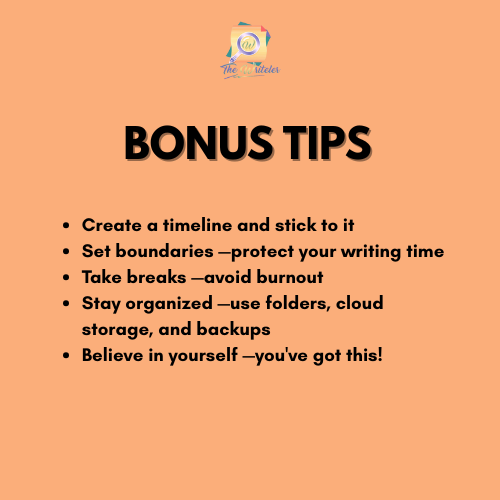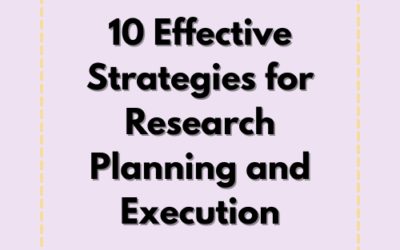Writing a thesis is one of the most significant academic challenges you’ll face. Whether you’re an undergraduate, master’s, or doctoral student, completing a thesis requires dedication, planning, and persistence.
In this step-by-step guide, we’ll walk you through everything you need to know to go from idea to final submission—without losing your mind.
- Step 1: Understand What a Thesis Is (and Isn’t)
- Step 2: Choose a Topic You Care About
- Step 3: Develop a Thesis Question or Hypothesis
- Step 4: Conduct a Literature Review
- Step 5: Design Your Methodology
- Step 6: Collect Your Data
- Step 7: Analyze Your Data
- Step 8: Create a Thesis Outline
- Step 9: Write Your Thesis First Draft
- Step 10: Revise, Edit, and Proofread
- Step 11: Format According to Guidelines
- Step 12: Submit and Defend (if applicable)
- Final Thoughts
Step 1: Understand What a Thesis Is (and Isn’t)
Before diving in, make sure you understand what a thesis entails:
- What it is: A formal, structured document presenting original research that contributes new knowledge to your field.
- What it isn’t: A summary of existing knowledge, a collection of loosely connected essays, or just a long paper.
Pro Tip: Check your university’s guidelines early on. Formatting, length, and submission requirements can vary widely.
Step 2: Choose a Topic You Care About
Your topic will be your companion for months—or even years—so choose wisely.
Tips for Choosing a Great Thesis Topic:
- Pick something you’re genuinely curious about
- Ensure there’s enough existing literature to build on
- Confirm it’s feasible within your time frame and resources
- Make sure it aligns with your advisor’s expertise
Example Topics by Discipline:
- Psychology: The Impact of Social Media on Adolescent Self-Esteem
- Computer Science: Optimizing Machine Learning Models for Real-Time Applications
- History: Decolonization and Its Effects on Post-Colonial Identity Formation
Step 3: Develop a Thesis Question or Hypothesis
Once you have a general topic, narrow it down to a specific research question or hypothesis .
Good Thesis Questions Are:
- Clear and focused
- Researchable (i.e., data can be collected)
- Relevant to your field
- Original or offers a new perspective
Example:
Instead of “What are the effects of climate change?” try:
Step 4: Conduct a Literature Review
A literature review helps you understand what others have already discovered about your topic.
Steps to Conduct a Strong Literature Review:
- Search academic databases (e.g., Google Scholar, JSTOR, PubMed)
- Identify key themes, debates, and gaps in existing research
- Organize sources thematically or chronologically
- Critically evaluate methodologies and findings
Tip: Use citation management tools like Zotero , Mendeley , or EndNote to organize your sources and citations.
Step 5: Design Your Methodology
This section outlines how you’ll answer your research question.
Decide On:
- Research Type: Qualitative, quantitative, or mixed methods
- Data Collection: Surveys, interviews, experiments, archival research, etc.
- Sampling Strategy: Who/what will you study and why?
- Analysis Tools: Statistical software, thematic coding, content analysis, etc.
Be detailed and clear so your work can be replicated or critiqued effectively.
Step 6: Collect Your Data
Now it’s time to gather the evidence that will support your thesis.
Common Data Collection Methods:
- Online surveys (via Google Forms, Qualtrics)
- In-person or virtual interviews
- Experiments or lab work
- Archival research or historical documents
- Public datasets or APIs
Pro Tip: Always get ethical clearance if required (especially in social sciences or medical fields).
Step 7: Analyze Your Data
Interpret what your data means in relation to your research question.
Tips for Effective ThesisAnalysis:
- Stay objective—let the data speak
- Use charts, graphs, or tables to visualize results
- Compare your findings to previous studies
- Discuss limitations and unexpected outcomes
If using statistical tools, ensure you understand their assumptions and limitations.
Step 8: Create a Thesis Outline
Before writing the full draft, create a strong structure. Here’s a common thesis structure:
Customize based on your department’s requirements.
Step 9: Write Your Thesis First Draft
Start writing—even if it’s not perfect. You can always revise later.
Thesis Writing Tips:
- Set daily or weekly word count goals
- Focus on getting ideas out first; polish later
- Keep paragraphs concise and focused
- Cite every source as you write to avoid plagiarism
Use tools like Grammarly or Hemingway Editor to improve clarity and grammar.
Step 10: Revise, Edit, and Proofread
Great theses aren’t written—they’re rewritten.
Revision Stages:
- Content Edits: Does your argument flow logically? Is everything relevant?
- Structural Edits: Are sections organized well? Do headings match content?
- Line Edits: Are sentences clear and concise?
- Proofreading: Fix typos, punctuation, and formatting issues
Ask your advisor, peers, or a professional editor to review your work.
Step 11: Format According to Guidelines
Most universities have strict formatting rules. Pay attention to:
- Font size and type (usually Times New Roman 12pt)
- Margins (often 1 inch on all sides)
- Line spacing (typically double-spaced)
- Citation style (APA, MLA, Chicago, etc.)
- Header/footer formatting
Double-check these details before submission.
Step 12: Submit and Defend (if applicable)
If you’re in a program that requires a defense:
Preparation Tips:
- Practice your presentation multiple times
- Anticipate questions from your committee
- Know your methodology inside and out
- Be ready to explain your contribution to the field
Celebrate after—you’ve earned it!

Final Thoughts
Completing a thesis is a marathon, not a sprint. It takes patience, resilience, and adaptability. But with a clear plan, consistent effort, and a bit of self-care along the way, you can—and will—finish your thesis.
Remember: Every great researcher started where you are now—with a blank page and a big idea.
Let The Writeler Co. support you in achieving academic and professional excellence! Whether you need assistance with research writing, proofreading, editing, or data analysis, our expert team is here to help.
📩 Email us today or 📲 message us on our Facebook account to get started. Let’s make your work shine!





0 Comments